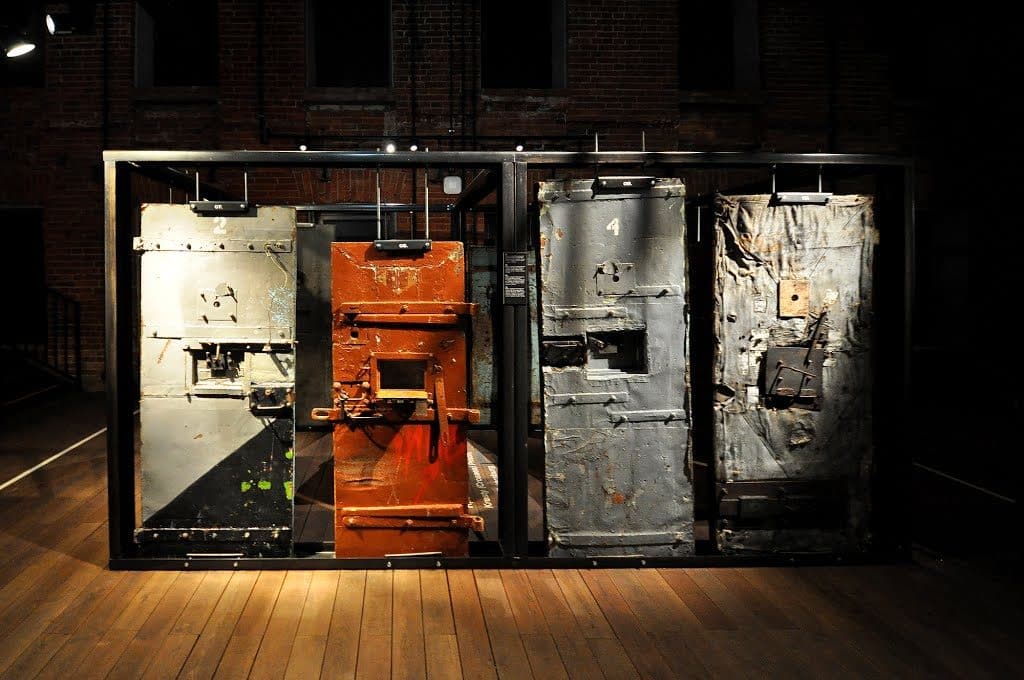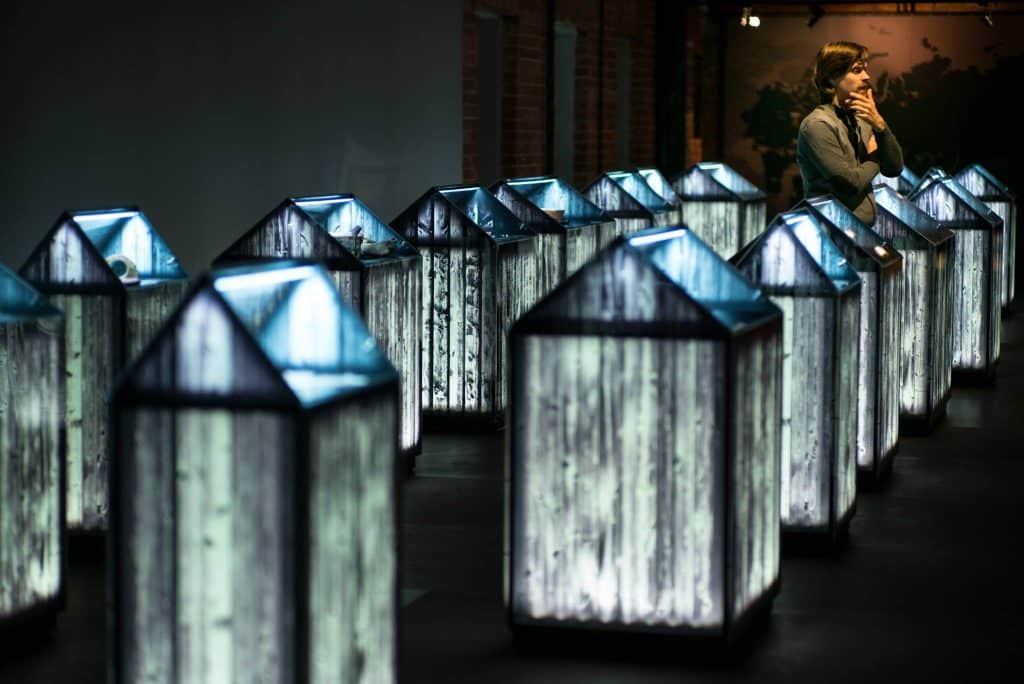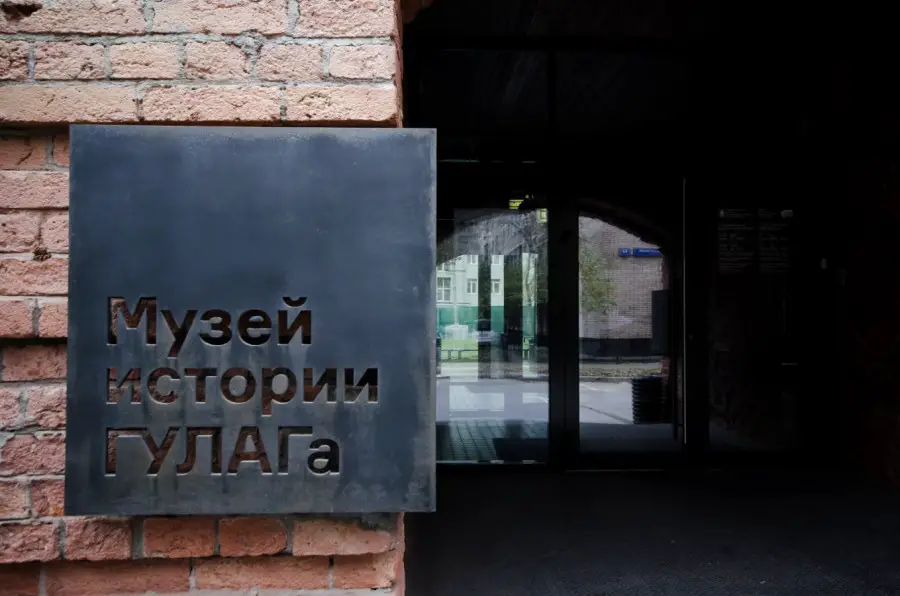Excursion included in SRAS cultural program for Moscow for Fall, 2017.
The GULAG Museum, established in 2001 by writer, historian, and former gulag prisoner A.V. Antonov-Ovseenko, is the only state museum devoted to Stalin’s repressions and the GULAG system.
We took a guided tour of this small but informative museum as part of our SRAS cultural program. Our translator met us at the Metro Dostoevskaya, and just ten minutes later, after walking through parks, parking lots and back alleys, we found the nondescript four-story brick building known as the GULAG Museum. Inside, everything and everyone remains perfectly visible – but a hazy darkness consumes the empty spaces due to the directed lighting. The mood this creates throughout the facility is somewhat eerie and somewhat confining, which is appropriate.
I checked my coat, and the token I’m given is cold and heavy. I feel it weigh down my pocket for the remainder of our visit. Many of the tokens I’ve received in Moscow are made from lightweight, cheap material – but that wouldn’t feel right here. The subject, like metal, is cold and heavy.

In contrast to the infamous “basements” of interrogations past, we ascend two flights of stairs before we’re met with our first glimpse of the real-life terror: 15 iron doors of different styles and from different camps arranged to form a rectangle denoting the size of a solitary confinement room. We move on to see locks, metal shelves considered “beds,” tin can lanterns, spoons and shivs, worn-out jackets and even orders signed by Stalin himself to detain or execute millions. Other exhibitions include a true-to-scale map of a prison camp layout and comprehensive map of all gulag locations, including prisoner counts; propaganda posters, dolls belonging to children born in the system, and letters frantically written on scraps of cloth with the hope they’ll reach their destination.
Although we see the lists, the numbers — even their names, the victims aren’t tangible. They still lack humanity, much like the system that placed them there.

Our guide, a talented and knowledgeable museum employee, told us story after story to help bring just a few of these victims out of the darkness for us. We’re as well about normal children who never had the opportunities to tell their stories. Survivors themselves tell their stories on documentary footage shown in a special room. Those stories, coupled with tangible evidence of their anguish, will stay with me forever.
Having read associated literature before you arrive will also help bring the exhibits to life. Anyone that’s read Evgenia Ginzburg’s Into the Whirlwind, will recognize the metal bed she’s given to sleep on after her KGB “interview” in Butyrka Prison and the outline denoting the size of the room she’s given in solitary confinement. The winter jackets and the masks prisoners would wear to protect their faces from frostbite one can picture on prisoners in Aleksandr Solzhenitsyn’s works. We see the same tin can spoons that Varlam Shalamov taught his fellow prisoner how to make in Kolyma Tales, and an empty can of condensed milk that might’ve been identical to the one he swindled from a snitch.
Between all these stories, we hear the cling-clang-clack of iron chains in the distance. I never did figure out where it came from.

The museum isn’t frightening, but it is solemn. You’re invited to sit, wander, ponder – take a minute and consider a complicated history among exposed brick, iron, wood, and darkness. With time, we exit the museum and take a second for our eyes to adjust. We turn the corner and find ourselves in a different alley, completely unfamiliar and, once again, disoriented as our guide leads us back.
You can arrange your own (highly recommended) tour here. English-speaking guides are available, but not at all times. It’s worth asking for, but you may need to bring your own translator if you don’t speak Russian and a guide is not available at the time you need. You can also get English-language audio guides from the desk.
GULAG History Museum
1st Samotechny Per, 9/1
Open 11:00 – 19:00, Thu 12:00 – 21:00.
Closed every Mon and last Fri of the month.
300 rubles (150 with student ID)
(excursion included in SRAS cultural program
for Moscow for Fall, 2017)
Website







